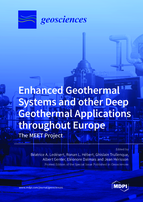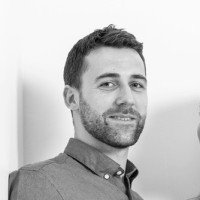Enhanced Geothermal Systems and other Deep Geothermal Applications throughout Europe: The MEET Project
A special issue of Geosciences (ISSN 2076-3263).
Deadline for manuscript submissions: closed (15 June 2022) | Viewed by 58214
Special Issue Editors
Interests: geothermal energy; geology; geological reservoirs (natural resources or waste); polluted soils; environment; green building
Interests: geothermics; fluid-rock interactions; metamorphism; phase change materials; cultural heritage weathering
Interests: rock microfabric analysis; structural geology
Interests: geothermal energy; EGS; geothermal exploitation; fractured reservoir; reservoir stimulation; hydrothermal alteration; structural geology; borehole geophysics; social acceptance
Interests: sustainable development; energy; renewable energies; geothermal energy; EGS; mining exploration; resources estimation; geology
Special Issue Information
Dear Colleagues,
The contribution of geothermal energy to the energetic mix of European countries has been steadily increasing in the last two decades. This resource, being virtually infinite and permanently available, with a negligible environmental impact, is to be seen as a pillar of the energy transition from fossil and nuclear fuels towards renewable sources. In addition, geothermal brines might also be an important source for the extraction of raw materials as lithium for battery production in the near future.
Depending on the existing surface infrastructures and needs, geothermal energy can be used directly, in the form of heat, or converted into electricity, and related applications like cooling and heat storage are also feasible.
Gains in geothermal energy can be achieved using a variety of techniques, depending on the geological setting of the underground. Among the list of exploitation concepts, Enhanced Geothermal Systems (EGS) are particularly interesting, as their application is much less independent of the underground setting, allowing, in turn, a large geographical deployment and market penetration in Europe. The challenges of EGS are multiple in terms of investment costs, the testing of novel reservoir exploitation approaches with an inherent risk of induced seismicity, and the presence of aggressive geothermal brines, damaging infrastructures.
The Multidisciplinary and multi-context demonstration of Enhanced Geothermal Systems exploration and Exploitation Techniques and potentials (MEET) project has received funding from the European Union’s Horizon 2020 research and innovation program under grant agreement No 792037. A European consortium of academic and industrial partners aims to analyze these challenges and propose a series of tools dedicated to potential users and investors in terms of developing EGS and other deep geothermal applications throughout Europe.
In order to reach its goal, the MEET project mainly addresses the need to capitalize on the exploitation of the widest range of fluid temperature in EGS plants, use co-produced hot brines in mature oil fields and apply EGS in different geological settings.
The approach is based on a combination of research and demonstration activities in order to make EGS safe and sustainable. This Special Issue summarizes the output of the MEET project based on laboratory experiments, geological field works on high-quality analogues, advanced reservoir modeling, the development of a decision-maker tool for investors and specific demonstration activities like chemical stimulation or the innovative monitoring of deep geothermal wells, and the production of electrical power via small-scale binary technology tested in various geological contexts in Europe.
Prof. Dr. Béatrice A. Ledésert
Dr. Ronan L. Hébert
Dr. Ghislain Trullenque
Dr. Albert Genter
Ms. Eléonore Dalmais
Dr. Jean Hérisson
Guest Editors
Manuscript Submission Information
Manuscripts should be submitted online at www.mdpi.com by registering and logging in to this website. Once you are registered, click here to go to the submission form. Manuscripts can be submitted until the deadline. All submissions that pass pre-check are peer-reviewed. Accepted papers will be published continuously in the journal (as soon as accepted) and will be listed together on the special issue website. Research articles, review articles as well as short communications are invited. For planned papers, a title and short abstract (about 100 words) can be sent to the Editorial Office for announcement on this website.
Submitted manuscripts should not have been published previously, nor be under consideration for publication elsewhere (except conference proceedings papers). All manuscripts are thoroughly refereed through a single-blind peer-review process. A guide for authors and other relevant information for submission of manuscripts is available on the Instructions for Authors page. Geosciences is an international peer-reviewed open access monthly journal published by MDPI.
Please visit the Instructions for Authors page before submitting a manuscript. The Article Processing Charge (APC) for publication in this open access journal is 1800 CHF (Swiss Francs). Submitted papers should be well formatted and use good English. Authors may use MDPI's English editing service prior to publication or during author revisions.
Keywords
- Geothermal energy
- Europe
- Various geological contexts
- Electricity and heat production
- Organic Rankine Cycle (ORC)
- Enhanced Geothermal Systems (EGS)
- Conversion from oil wells to geothermal











